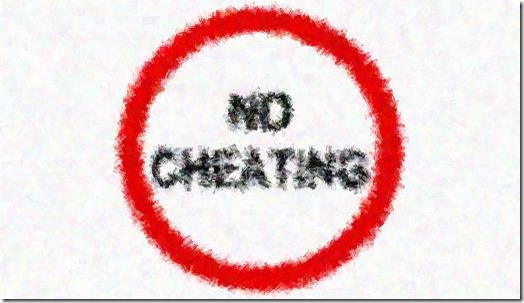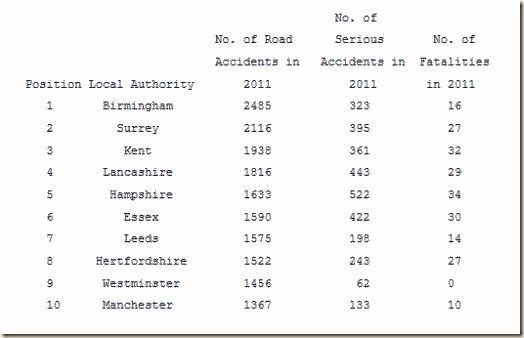UPDATED
When I first saw this I thought it was from America, then I thought is was April Fools’ Day – but it really is genuine.
The story reports that a company has launched a “free driving school”. It goes without saying that if there really were schools offering genuinely free driving courses and running successful businesses out of it then the rest of us would go bankrupt overnight. But I’m not going to lose any sleep over it, and nor should you.
Teaching people to drive for free is not a business model. In reality, someone somewhere has got to bankroll the free lessons. This applies to any “free” service or product. Bearing that in mind, the fog clears a little when you discover that the company who’s doing this, Stoneacre Motor Group, is a new & used car dealership.
The story says that Stoneacre had a problem with its apprentices not being able to drive. Since apprentices tend to be very young, very skint, and highly unlikely to have started driving lessons by themselves, and since Stoneacre needed them to be able to transport vehicles between branches, they decide to get around this by introducing their own in-house driver training. Up to this point, it’s a great idea.
However, due to the “success” of the scheme, it then came up with the idea of extending it “to the public”.
In actual fact, this statement is somewhat misleading, because when they say “the public” they mean “anyone who buys a car from us”. The story (and Stoneacre’s website) makes that quite clear. The website also says that there’s “no catch” – well, since they are up front about you having to buy a car from them first, that statement does appear to be otherwise true. They claim on their website that the number of lessons provided is “unlimited”:
The scheme allows you to take as many free lessons as you need in preperation (sic) for your driving test and could potentially save you £100’s of pounds in fees.
This rather strange wording, and quite reserved. If lessons were really “unlimited”, you’d expect it to definitely save many hundreds – and possibly thousands – of pounds so you’d be shouting that from the rooftops. The website also says:
In order to take advantage of the Stoneacre driving school you either have to buy a car from the group or recommend a family member or friend who goes on to buy a car.
Again, this is odd wording. It seems to preclude anyone from buying a car and then just giving the free lessons to someone else (like a son or daughter). The person who gets the free lessons appears to be required to organise the entire transaction in advance, and I can’t see too many parents listening to their 17-year old for advice on where to buy the next family car, or choosing one dealer over another purely on the basis that they give free driving lessons from them. But I guess that Stoneacre is relying on the likelihood that the offer will attract enough attention to sell a few extra cars.
Anybody who has ever looked into buying a new car will have encountered the enormous and confusing range both of models and prices quoted for the same model across different dealerships. In just one example resulting from a quick Google search, prices for the Corsa Ecoflex S model range between £7,990 and the list price of £11,570 (a whopping 30% range). Even the dealer with the lowest price will still be making a huge profit (when was the last time you saw a car dealer driving around in a banged up Micra?). So with a 30% price range to play with, who would ever know if you slapped a monkey on the price to cover a course of “free” driving lessons? Alternatively, of course, you could simply take the hit of the “unlimited” number of free lessons right in your profits, but let’s be realistic about this…
Used car prices present an even more fertile area for creative pricing. At least with a new car you do have the list price as distant baseline to refer to. With used cars there is nothing. Even where attempts are made to provide guide prices the interpretation over what constitutes “good”, “poor”, or indifferent in terms of the condition of the vehicle is will be subjective. And a bit of chromed plastic stuck on the back, turning a basic model into a “ghia” or something with an “i” in it, can add hundreds. Hiding £500 within used car prices would be easier still.
And then there’s the “package” you get. In the 80s I bought a used Ford Cortina Mk IV from a dealer. It looked immaculate on the forecourt, and came with “free servicing and repairs* for 12 months”. The most important part of that phrase turned out to be the “*”, which roughly translates as “unless you need anything doing to it, and excluding certain things such as labour, brakes, and clutch, and all the other stuff you’ll most likely need”. It meant that I was liable for significant labour costs at the service if it needed anything doing to it (a huge part of any repair bill) and the whole of the brakes bill (things that wore out naturally were excluded from the “free” service). And although that car looked immaculate on the forecourt, after a few weeks it became clear that it had had a substantial paint job carried out on it to conceal corrosion. By the time I got rid of it some years later it was a rust bucket, and I spent a lot of time and money patching it up while I owned it.
That “free package” was part of the dealer’s justification for the price I paid, and that was probably around £500-£1,000 more than I’d have paid for the same car from a private seller. But since I had to buy it on finance, buying privately wasn’t an option – something that applies to many car buyers today. The dealers know this, which is why they offer attractive “packages” in the first place. Things are no different now – dealers do not give things away. They just word their offers to make it look like they do.
Another version of the story quotes the company MD:
As far as we’re aware the scheme is a first for the motor industry and our initial trial has been a huge success with the demand for free driving lessons heavily outweighing capacity and far exceeding our initial expectations.
This is misleading unless you take it in context with what they have to offer at the moment. At the time of writing they only have two instructors – one covering Doncaster, the other Peterborough – and it doesn’t take much to “outweigh capacity” in one instructor’s diary, particularly if he or she is salaried (Stoneacre implies that theirs are) and not working weekends or late evenings.
I don’t begrudge Stoneacre trying to sell more cars using this scheme – good luck to them – but I think they will run into serious problems somewhere along the line. The first issue to catch up with them is likely to be that word “unlimited”. As long as their pupils are passing their tests after 30 hours or less then the necessary costs will be easily soaked up and everyone will be happy – but pick up a few people who have difficulties and start running into 40, 50, or more hours, and bells will start ringing in the finance department. Moreover, if one of those learners appears who you know absolutely should not be driving, and who is going to end up taking lots of lessons and lots of tests, is Stoneacre going to stick with them? And if it does, should it? Also, has Stoneacre considered that as time goes by you tend to collect a sizeable group of slower learners, and there will be periods when most of your capacity is taken by these?
Another issue is the value of the lessons relative to the purchase made. I had a pupil pass his test recently who is planning to get a car in the next few weeks. When I asked him how much he was planning to spend he replied “under £1,000”, and he is far from being untypical of decent 17-year old drivers. The lower the value of the car, the harder it is to conceal “free lessons” in its price – try it, and the price immediately goes outside of the range the buyer is interested in. OK, you might entice a few to spend a little more than they intended – and maybe that’s what is being counted on here – but it will simply result in hugely overpriced cars which, in time, will pull overall sales down.
Remember that there is no such thing as a “free lesson”. If the pupil doesn’t pay for it, the instructor has to. And driving around using up fuel just increases the amount of money the instructor loses – which is why the “free” lessons from certain pseudo-national driving schools always involve an hour sitting in a car park talking. The margins on driving lessons are already small, leaving no wiggle room for creative pricing. Stoneacre has effectively forced itself to either cut profits or increase prices – and that second option is likely to lead to reduced sales, which then cuts profits anyway.
If I didn’t know better, I’d say Stoneacre’s finances were being run by one of those cheapo driving instructors who are trying to commit business suicide with a business model like this.
It seems that the offer of free lessons isn’t as all-encompassing as was originally implied. This article says that the only people eligible are those buying a 63-plate car (i.e. a brand new one). So unless the lessons are freely transferrable, the people who would most benefit probably won’t.
 Wilford Lane has now closed for 4 months while work on that waste of money called “The Tram” continues.
Wilford Lane has now closed for 4 months while work on that waste of money called “The Tram” continues.



 Well done Mitch, who passed today with 5 driver faults. This was his third attempt – he should have passed those other two times, but the pupils you have most faith in are often the ones who often end up doing something silly. Not this time, though. A well-deserved licence is on its way!
Well done Mitch, who passed today with 5 driver faults. This was his third attempt – he should have passed those other two times, but the pupils you have most faith in are often the ones who often end up doing something silly. Not this time, though. A well-deserved licence is on its way!